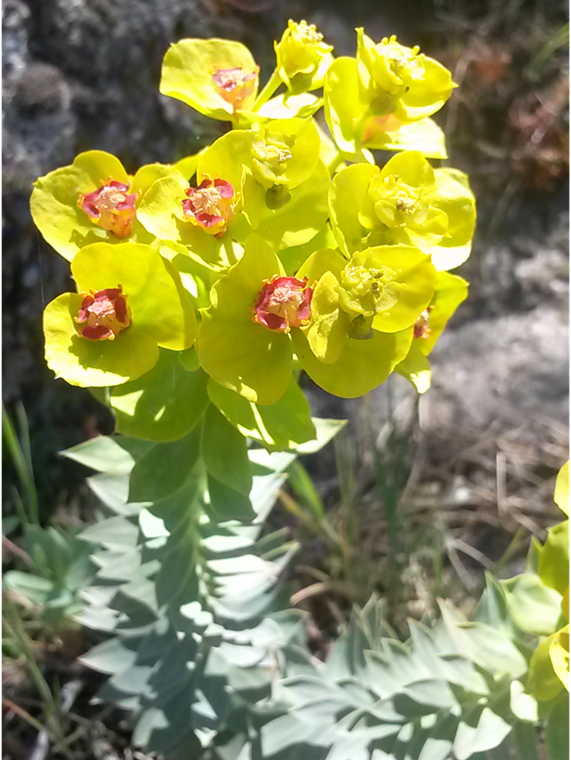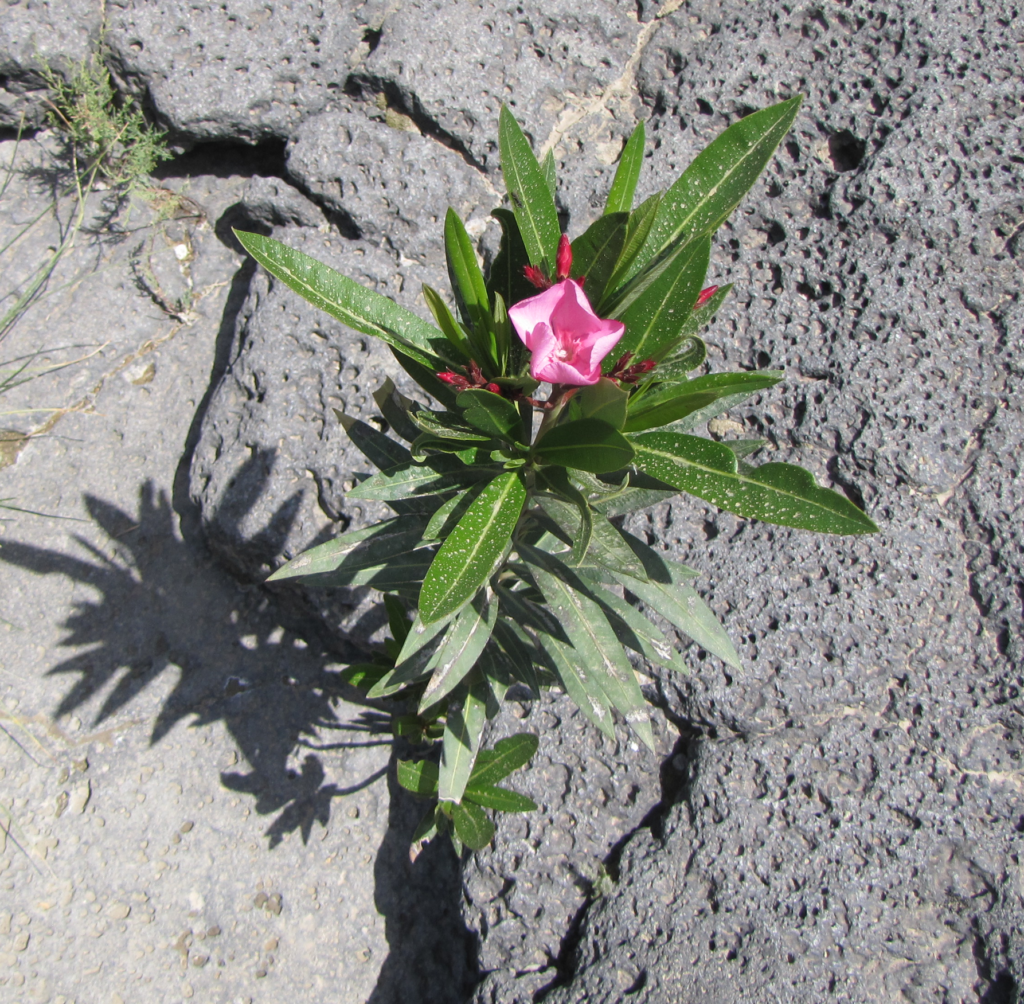Dove trovi in Sicilia questa rara lava a colonna?
Basalti colonnari, quando magmi basaltici, solidificando in condizioni ipoabissali, formano ampi prismi colonnari per contrazione termica della massa raffreddata , come quelli presenti in Sicilia, nella famosa Gole dell‘Alcantara.

L’euforbia e l’oleandro piacciono a noi, api?
Le piante di euforbia sono un’importante fonte di nettare per le api. Le loro molte specie fioriscono in tempi diversi e forniscono cibo per le api, soprattutto in piena estate quando i fiori scarseggiano. Sono anche importanti dove altre piante hanno difficoltà a crescere a causa del terreno sassoso.
L’oleandro, invece, è velenoso anche per le api e viene respinto da loro. I fiori dell’oleandro sono ermafroditi, cioè sia maschi che femmine, e quindi capaci di autofecondazione. In Sicilia, la corteccia essiccata dell’oleandro è tradizionalmente usata per avvelenare i ratti e scacciare i parassiti.
Etna e le sue eruzioni

L’Etna è il più grande vulcano attivo d’Europa e ancora oggi ci sono piccole ma innocue eruzioni. Forse si può vedere una nuvola di fumo sull’Etna anche oggi. Ma oltre all’eruzione del 1651, che distrusse tutta Bronte, ci sono state diverse altre eruzioni distruttive nella storia:
– 693 a.C.: Distruzione dell’antica città di Katane (Catania)
– 1329: tre colate laviche –> distruzione di Mascali; minaccia per Catania; colata lavica verso il mare a nord di Catania
– 1381: distruzione del porto “Ulisse” di Catania
– 1669: causata una crepa nella terra lunga 18 km da parecchi terremoti –> distruzione di molti villaggi intorno all’Etna
– 1911: Formazione del cratere di nord-est da forti eruzioni
– 1928: Distruzione di Mascali
– 2001: forte caduta di cenere; distruzione di parti della funivia/sciovia sul versante orientale dell’Etna
– 2002/03: Distruzione di stazioni sciistiche; distruzione di strade d’alta quota per eruzione della terra
Where in Sicily do you find this rare column lava?
Columnar basalts, when basaltic magmas, solidifying in hypoabyssal conditions, form large columnar prisms by thermal contraction of the cooled mass, such as those found in Sicily, in the famous Alcantara Gorge.

Are plants like Spurge and oleander liked by us, bees?
Spurge plants are an important source of nectar for bees. Their many species flower at different times and provide food for bees especially in midsummer when flowers are scarce. They are also important where other plants have difficulty growing due to stony ground.

The oleander, on the other hand, is poisonous even to bees and is spurned by them. The flowers of the oleander are hermaphroditic, i.e. both male and female, and thus capable of self-fertilisation. In Sicily, the dried bark of the oleander is traditionally used to poison rats and drive away vermin.

Etna and its eruptions
Etna is the largest active volcano in Europe and even today there are still small but harmless eruptions from time to time. But apart from the eruption in 1651, which destroyed the whole of Bronte, there have been several other destructive eruptions in history:
– 693 BC: destruction of the ancient city of Katane (Catania)
– 1329: three lava flows –> destruction of Mascali; threat to Catania; lava flow towards the sea north of Catania
– 1381: destruction of the port “Ulisse” of Catania
– 1669: causing an 18 km long crack in the earth by several earthquakes –> destruction of many villages around Etna
– 1911: Formation of the north-east crater by strong eruptions
– 1928: Destruction of Mascali
– 2001: Heavy ash fall; destruction of parts of the cable car/ski lift on the eastern side of Etna
– 2002/03: Destruction of ski regions; destruction of high altitude roads by eruption
